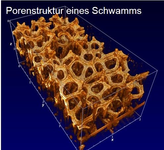Mediotemporal contributions to semantic processing : fMRI evidence from ambiguity processing during semantic context verification
Hippocampus. Bd. 15. H. 5. 2005 S. 597 - 609
Erscheinungsjahr: 2005
ISBN/ISSN: 1050-9631
Publikationstyp: Zeitschriftenaufsatz
Sprache: Englisch
Doi/URN: 10.1002/hipo.20080
| Geprüft | Bibliothek |
Inhaltszusammenfassung
The medial temporal lobe (MTL) is well known to be crucial for various types of memory; however, controversy remains as to which of its substructures contribute to semantic processing and, if so, to what extent. The current study addresses the issue of MTL contributions to semantic processing during lexico-semantic ambiguity processing by using functional magnetic resonance imaging (fMRI) in combination with a context verification task (CVT). The CVT required decisions on the semantic fit of ...The medial temporal lobe (MTL) is well known to be crucial for various types of memory; however, controversy remains as to which of its substructures contribute to semantic processing and, if so, to what extent. The current study addresses the issue of MTL contributions to semantic processing during lexico-semantic ambiguity processing by using functional magnetic resonance imaging (fMRI) in combination with a context verification task (CVT). The CVT required decisions on the semantic fit of congruent and incongruent target words to the overall meaning of preceding sentential contexts with and without semantic ambiguity. In two of the four experimental conditions (congruent homographic, incongruent homographic), target decisions were critically dependent on the successful processing of prior sentence-final lexico-semantic ambiguity. Semantic context verification per se evidenced bilateral activations of the hippocampus that were part of a functional network including inferior prefrontal and superior parietal cortices. Commonalities in activation differences pertaining to the specific cognitive component of lexico-semantic ambiguity processing were found in a left temporal lobe network that comprised activation foci in the temporal pole, the parahippocampal and fusiform gyri. The present results suggest that the hippocampus may well contribute to semantic processing, namely by a mnemonic function that serves to link the target meaning representation with the meaning of a prior sentence context. Contrary to previous reports from human lesion studies, the present findings further suggest, that the specific cognitive component of lexico-semantic ambiguity processing is neither dependent on the hippocampus nor exclusively subserved by the temporal pole, but also recruits an associative semantic memory function from the parahippocampal gyrus as well as a more general (bottom-up) semantic function from the fusiform gyrus.» weiterlesen» einklappen
Klassifikation
DFG Fachgebiet:
Neurowissenschaften
DDC Sachgruppe:
Psychologie

